Conductive Compartmented Capsules Encapsulating a Bitumen Rejuvenator
Abstract
:1. Introduction
2. Materials and Methods
2.1. Conductive Alginate Capsules Encapsulating Bitumen Rejuvenator
2.2. Bitumen and Mortar ITS
- σx = maximum or average stress in the x direction on the vertical plane (Pa),
- σy = maximum or average stress in the y direction on the vertical plane (Pa),
- P = applied vertical load (N),
- d = diameter of the specimen (mm),
- t = thickness of the specimen (mm).
2.3. Capsule Composite Characterisation
2.3.1. Viscosity
2.3.2. Relative Density
- ρ0 = relative density (g/cm3)
- m = total mass of the capsules (g)
- V0 = volume (cm3)
2.3.3. Scanning Electron Microscope (ESEM)
2.3.4. Thermogravimetric Analysis (TGA)
2.3.5. Electrical Resistivity
2.3.6. Uniaxial (Compression) Strength Test
- a = contact area (m)
- P = Load (N)
- Req = Equivalent Radius (m);
2.3.7. Induction
3. Results
3.1. Alginate Solution Viscosity
3.2. Capsule Size Distribution
3.3. Capsule Relative Density
3.4. Capsule SEM
3.5. Capsule Resistivity
3.6. Capsule TGA
3.7. Capsule Compressive Strength
3.8. Capsule Induction
3.9. Indirect Tensile Strength of Mortar and Bitumen Test Specimens
4. Discussion
5. Conclusions
6. Patents
Author Contributions
Funding
Acknowledgments
Conflicts of Interest
References
- Tabaković, A.; Braak, D.; Van Gerwen, M.; Copuroglu, O.; Post, W.; Garcia, S.J.; Schlangen, E. The compartmented alginate fibres optimisation for bitumen rejuvenator encapsulation. J. Traffic Transp. Eng. 2017, 4, 347–359. [Google Scholar] [CrossRef]
- Xu, S.; García, A.; Su, J.; Liu, Q.; Tabaković, A.; Schlangen, E. Self-Healing Asphalt Review: From Idea to Practice. Adv. Mater. Interfaces 2018, 5, 1800536. [Google Scholar] [CrossRef]
- Tabaković, A.; Schlangen, E. Self-Healing Technology for Asphalt Pavements. In Self-Healing Materials; Hager, M.D., van der Zwaag, S., Schubert, U.S., Eds.; Springer International Publishing: Cham, Switzerland, 2016; pp. 285–306. [Google Scholar]
- Leegwater, G.; Tabokovi, A.; Baglieri, O.; Hammoum, F. Terms and definitions on crack-healing and restoration of mechanical properties in bituminous materials. In Proceedings of the RILEM International Symposium on Bituminous Materials, Lyon, France, 8–10 June 2020. [Google Scholar]
- Seneviratne, S.; Tabaković, A. Self-Healing Asphalt HealRoad Customer Discovery and Needs Analysis Report; Unpublished; 2020. [Google Scholar]
- GOV.UK. Road Accidents and Safety Statistics. 2021. Available online: https://www.gov.uk/government/collections/road-accidents-and-safety-statistics (accessed on 5 February 2021).
- Safety, N.W.Z. Work Zone Fatal Crashes and Fatalities. 2021. Available online: https://www.workzonesafety.org/crash-information/work-zone-fatal-crashes-fatalities/#national (accessed on 5 February 2021).
- Butt, A.A.; Brigisson, B.; Kringos, N. Optimizing Highway Lifetime by Improving the Self-Healing Capacity of Asphalt. Procidia Soc. Behav. Sci. 2012, 48, 2190–2200. [Google Scholar] [CrossRef] [Green Version]
- García, Á.; Schlangen, E.; van de Ven, M.; Liu, Q. Electrical conductivity of asphalt mortar containing conductive fibers and fillers. Constr. Build. Mater. 2009, 21, 3175–3181. [Google Scholar] [CrossRef]
- García, Á.; Schlangen, E.; van de Ven, M.; Liu, Q. A simple model to define induction heating in asphalt mastic. Constr. Build. Mater. 2012, 31, 38–46. [Google Scholar] [CrossRef]
- Liu, Q. Induction Healing of Porous Asphalt Concrete. Ph.D. Thesis, Delft University of Technology, Delft, The Netherlands, 2012. [Google Scholar]
- Bueno, M.; Arraigada, M.; Partl, M.N. Damage detection and artificial healing of asphalt concrete after trafficking with a load simulator. Mech. Time Depend. Mater. 2016, 20, 265–279. [Google Scholar] [CrossRef]
- Norambuena-Contreras, J.; Garcia, A. Self-healing of asphalt mixture by microwave and induction heating. Mater. Des. 2016, 106, 404–414. [Google Scholar] [CrossRef]
- Norambuena-Contreras, J.; Serpell, R.; Vidal, G.V.; González, A.; Schlangen, E. Effect of fibres addition on the physical and mechanical properties of asphalt mixtures with crack-healing purposes by microwave radiation. Constr. Build. Mater. 2016, 127, 369–382. [Google Scholar] [CrossRef]
- Wan, P.; Liu, Q.; Wu, S.; Zhao, Z.; Chen, S.; Zou, Y.; Yu, X. A novel microwave induced oil release pattern of calcium alginate/nano-Fe3O4 composite capsules for asphalt self-healing. J. Clean. Prod. 2021, 297, 126721. [Google Scholar] [CrossRef]
- Tabaković, A.; Post, W.; Cantero, D.; Copuroglu, O.; Garcia, S.J.; Schlangen, E.J.S.M.S. Reinforcement and healing of asphalt mixtures by rejuvenator encapsulation in alginate compartmented fibres. Smart Mater. Struct. 2016, 25, 084003. [Google Scholar] [CrossRef] [Green Version]
- Xu, S.; Tabaković, A.; Liu, X.; Schlangen, E. Calcium alginate capsules encapsulating rejuvenator as healing system for asphalt mastic. Constr. Build. Mater. 2018, 169, 379–387. [Google Scholar] [CrossRef] [Green Version]
- Gonzalez-Torre, I.; Norambuena-Contreras, J. Recent advances on self-healing of bituminous materials by the action of encapsulated rejuvenators. Constr. Build. Mater. 2020, 258, 119568. [Google Scholar] [CrossRef]
- Tabaković, A.; Schuyffel, L.; Karač, A.; Schlangen, E. An Evaluation of the Efficiency of Compartmented Alginate Fibres Encapsulating a Rejuvenator as an Asphalt Pavement Healing System. Appl. Sci. 2017, 7, 647. [Google Scholar] [CrossRef] [Green Version]
- Xu, S.; Liu, X.; Tabaković, A.; Schlangen, E. A novel self-healing system: Towards a sustainable porous asphalt. J. Clean. Prod. 2020, 259, 120815. [Google Scholar] [CrossRef]
- Zemskov, S.V.; Jonkers, H.M.; Vermolen, F.J. Two analytical models for the probability characteristics of a crack hitting encapsulated particles: Application to self-healing materials. J. Comput. Mater. Sci. 2011, 50, 10. [Google Scholar] [CrossRef]
- Tabaković, A.; Karač, A.; Ivanković, A.; Gibney, A.; McNally, C.; Gilchrist, M.D. Modelling the quasi-static behaviour of bituminous material using a cohesive zone model. Eng. Fract. Mech. 2010, 77, 2403–2418. [Google Scholar] [CrossRef]
- Mohan, J.; Ivanković, A.; Murphy, N. Effect of prepreg storage humidity on the mixed-mode fracture toughness of a co-cured composite joint. Compos. Part A Appl. Sci. Manuf. 2013, 45, 12. [Google Scholar] [CrossRef]
- Johnson, K.L. Contact Mechanics; Cambridge University Press: Cambridge, UK, 1985. [Google Scholar]
- Xu, S.; Tabakovic, A.; Schlangen, E.; Liu, X. Alginate Capsules Encapsulating Rejuvenator as Self-healing System for Porous Asphalt Concrete; HelCON: Delft, The Netherlands, 2016. [Google Scholar]
- Liu, Q.; Schlangen, E.; García, Á.; van de Ven, M. Induction heating of electrically conductive porous asphalt concrete. Constr. Build. Mater. 2010, 24, 1207–1213. [Google Scholar] [CrossRef]
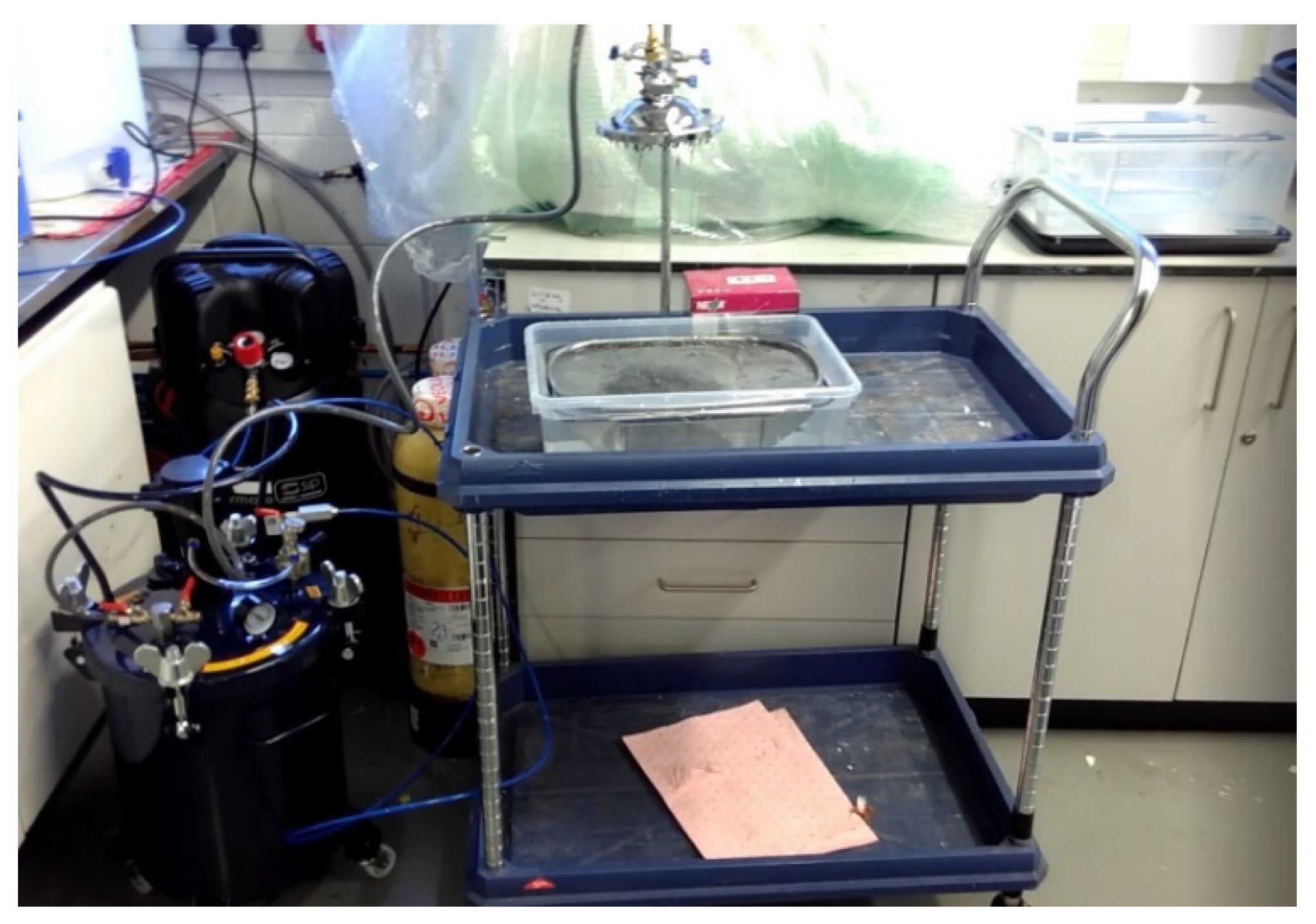
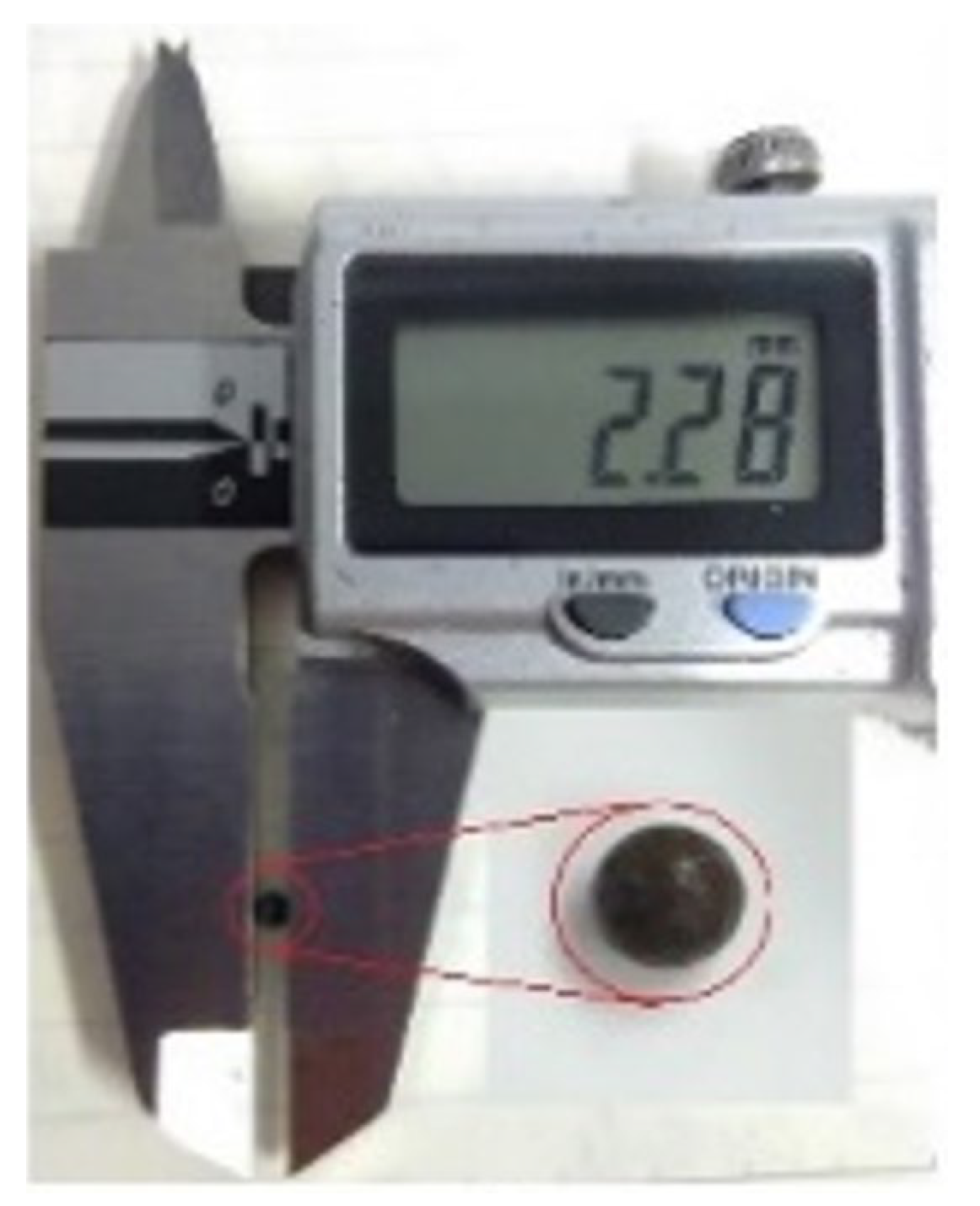
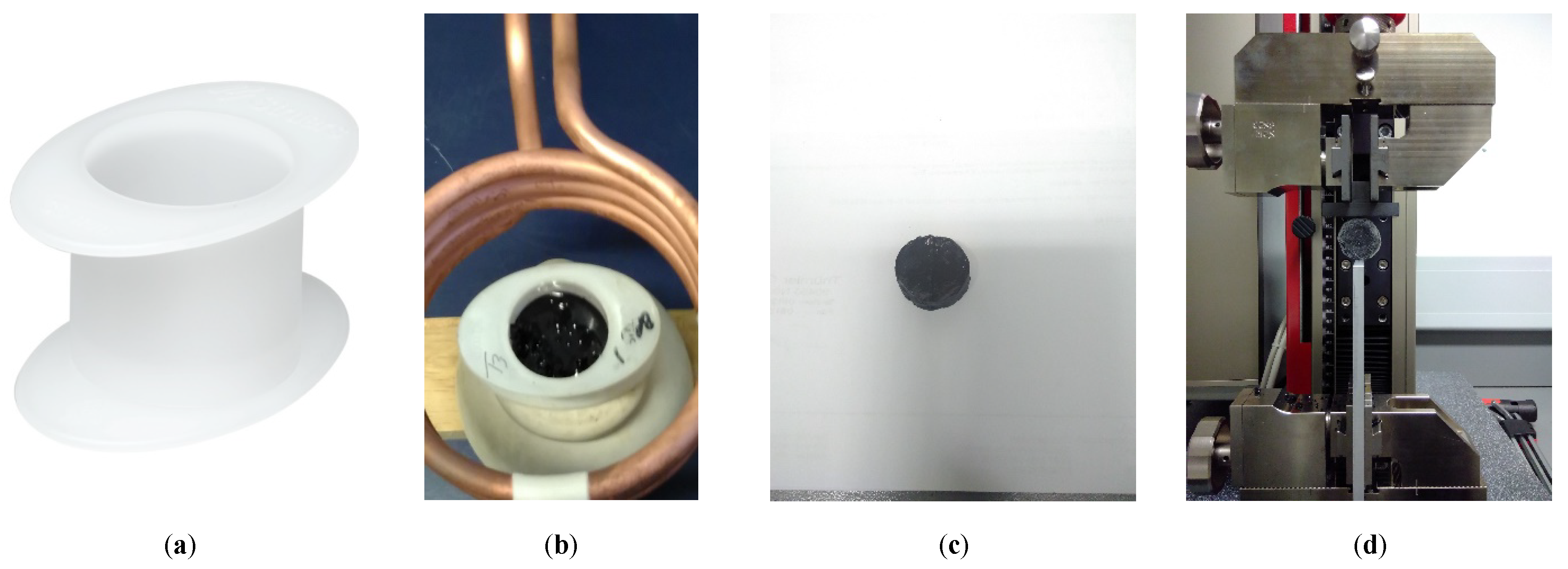
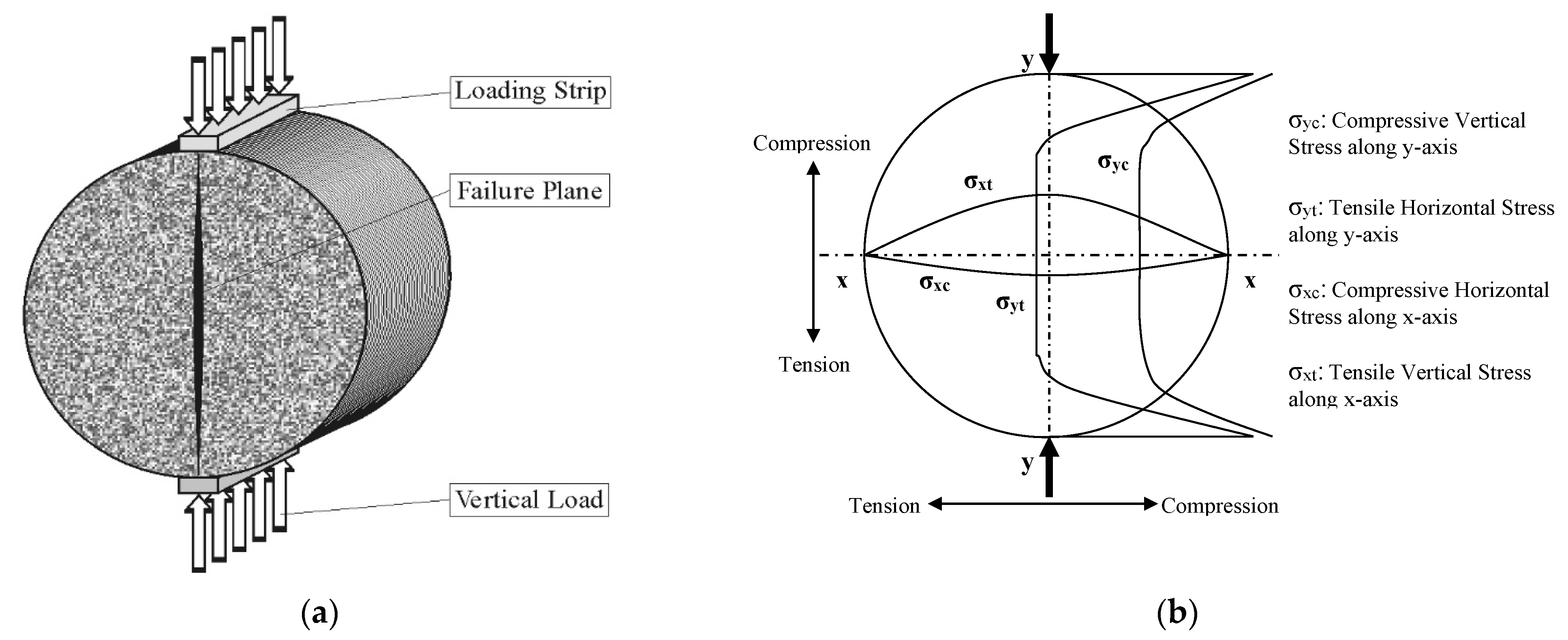
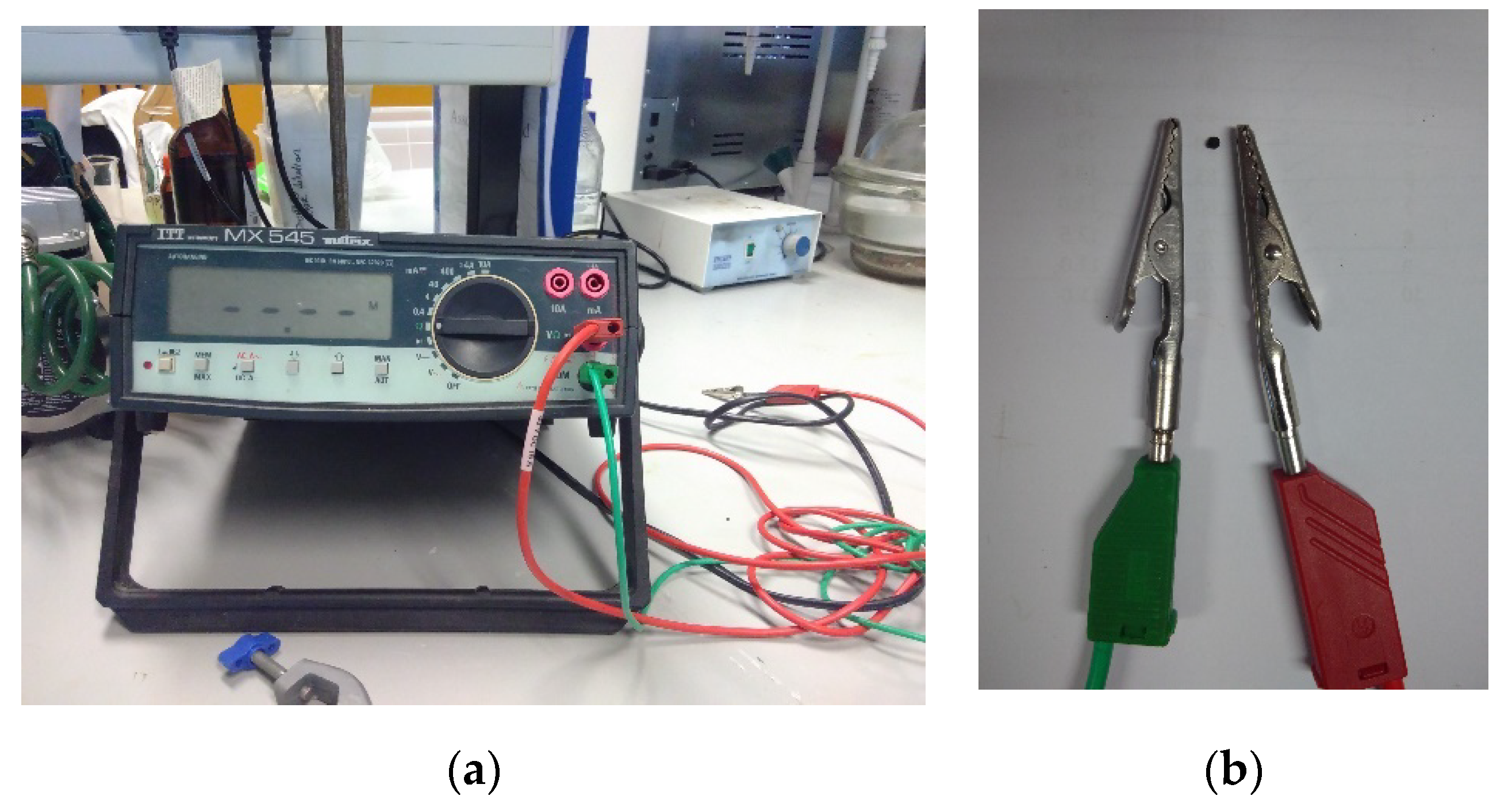

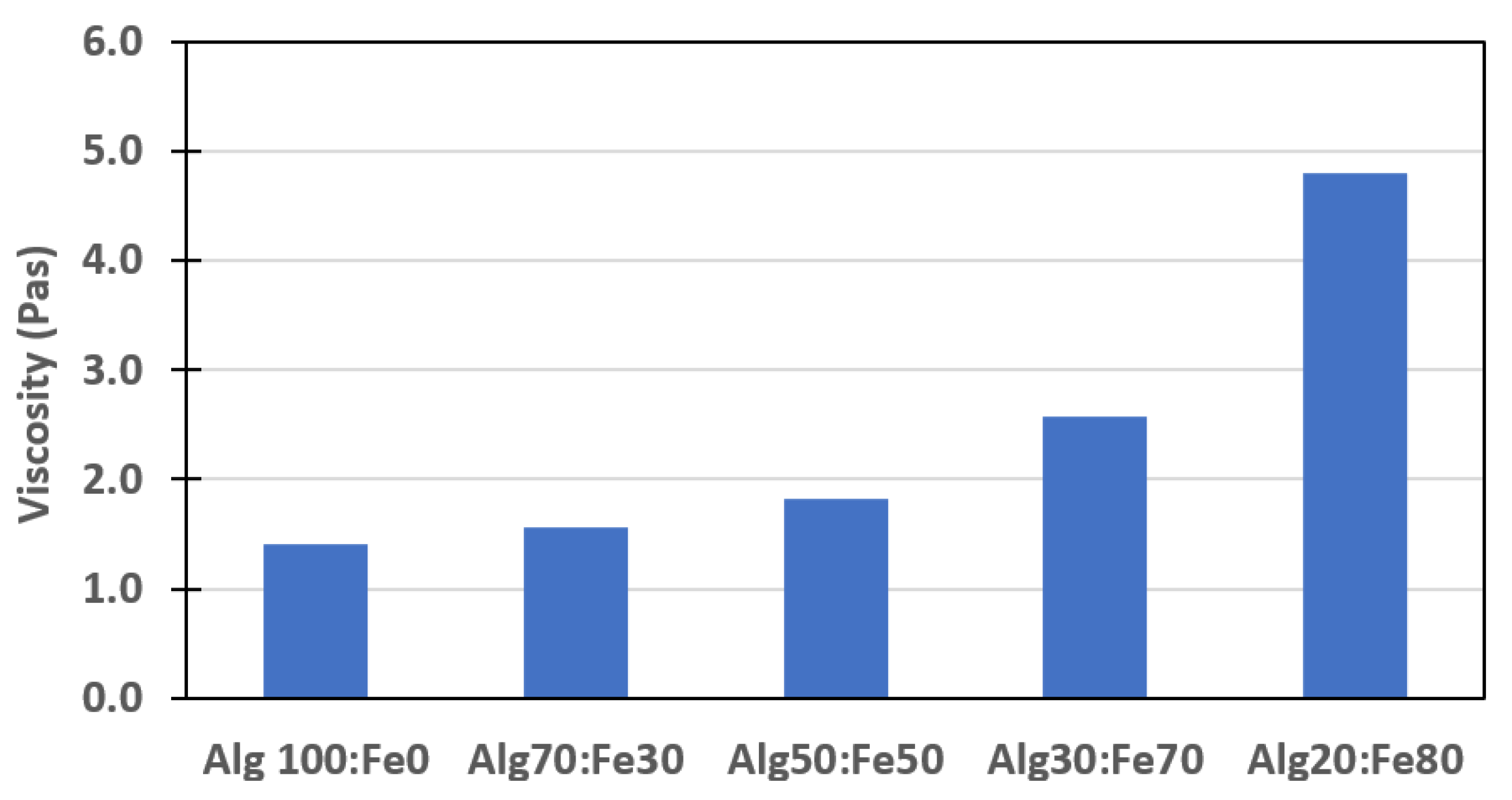
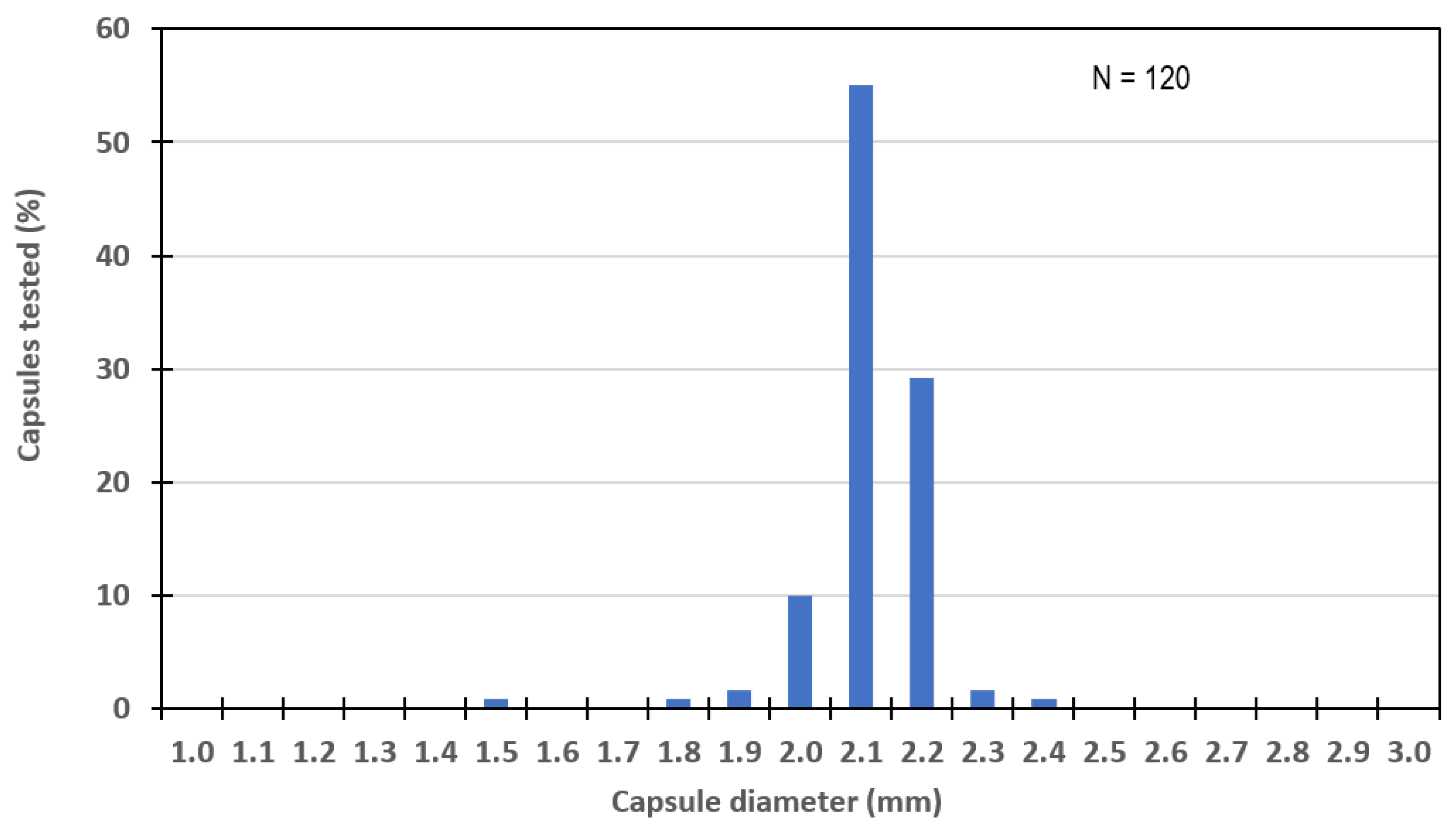


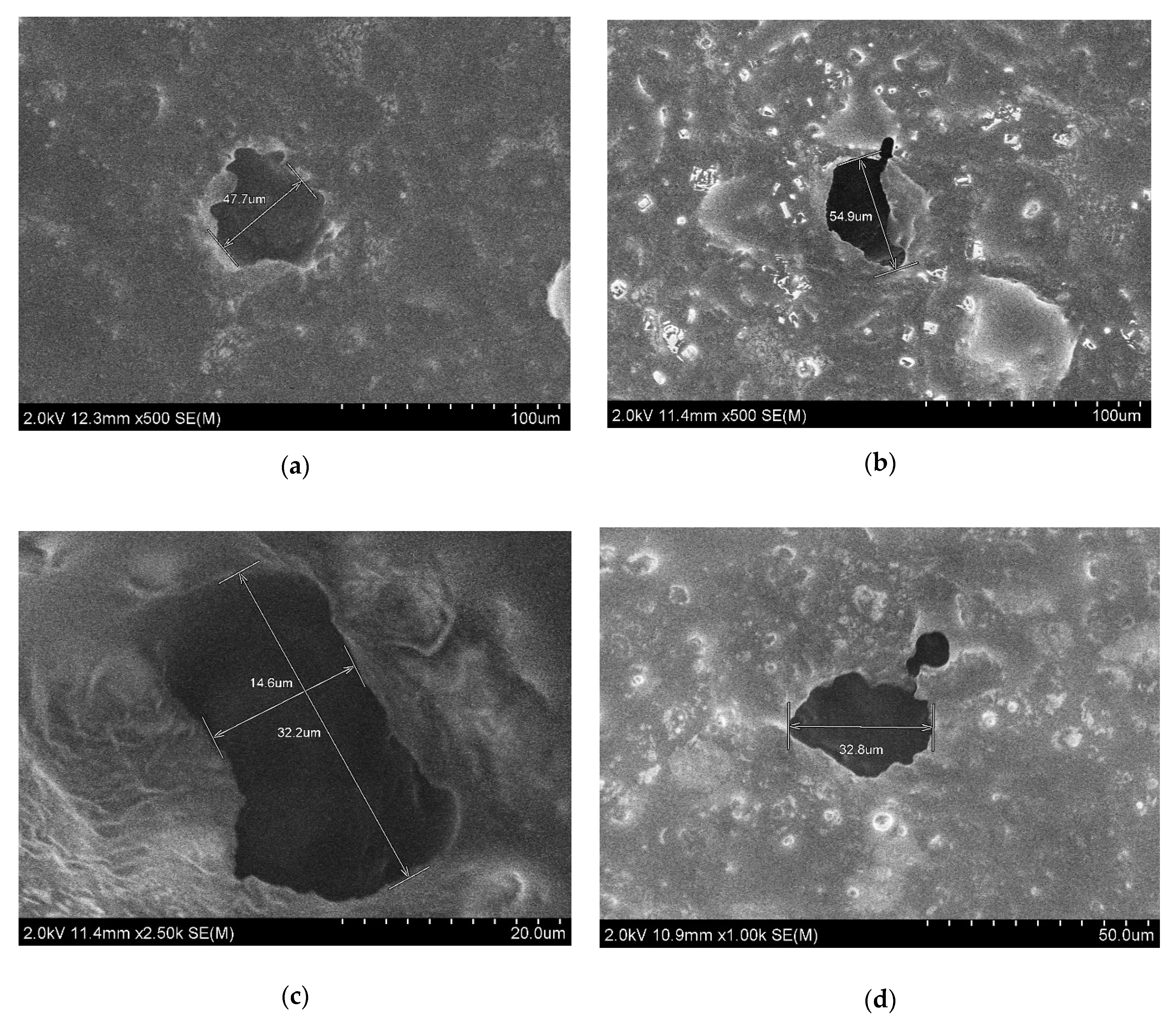

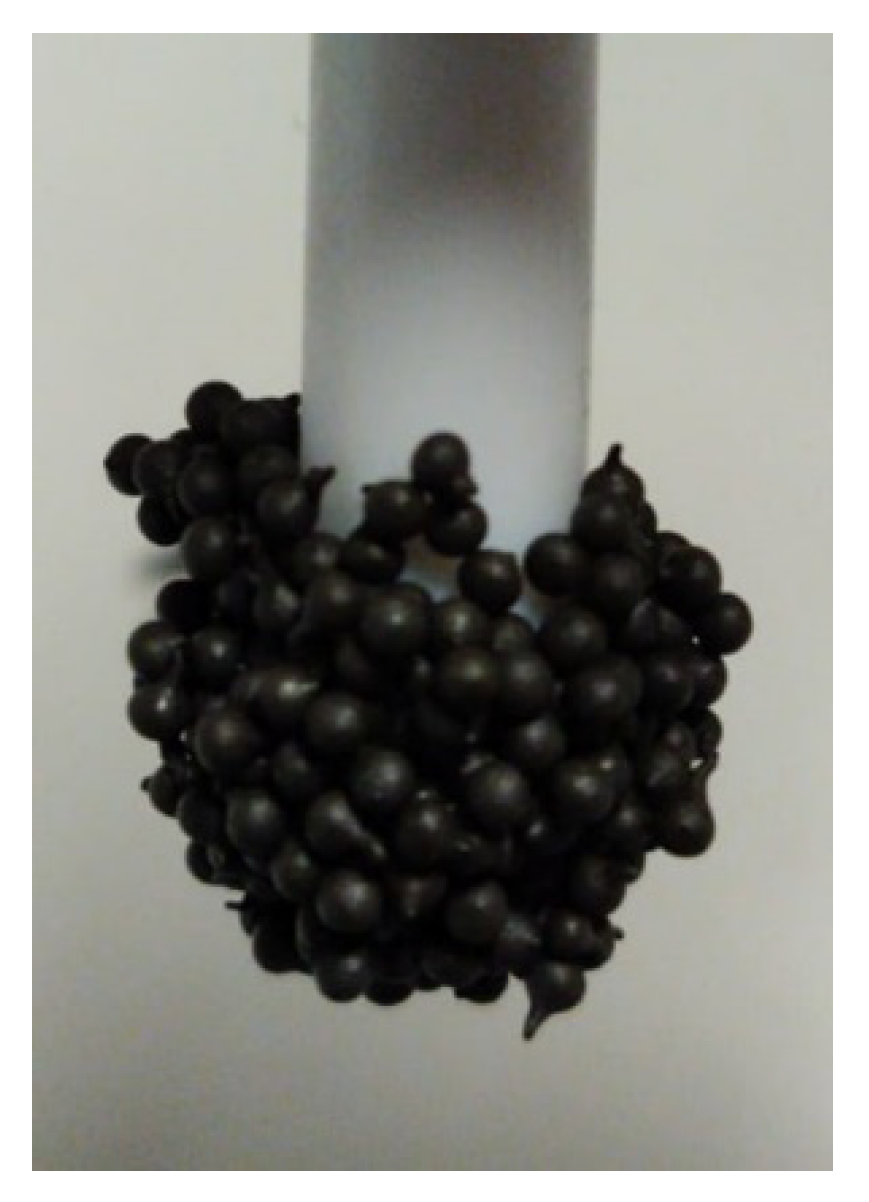
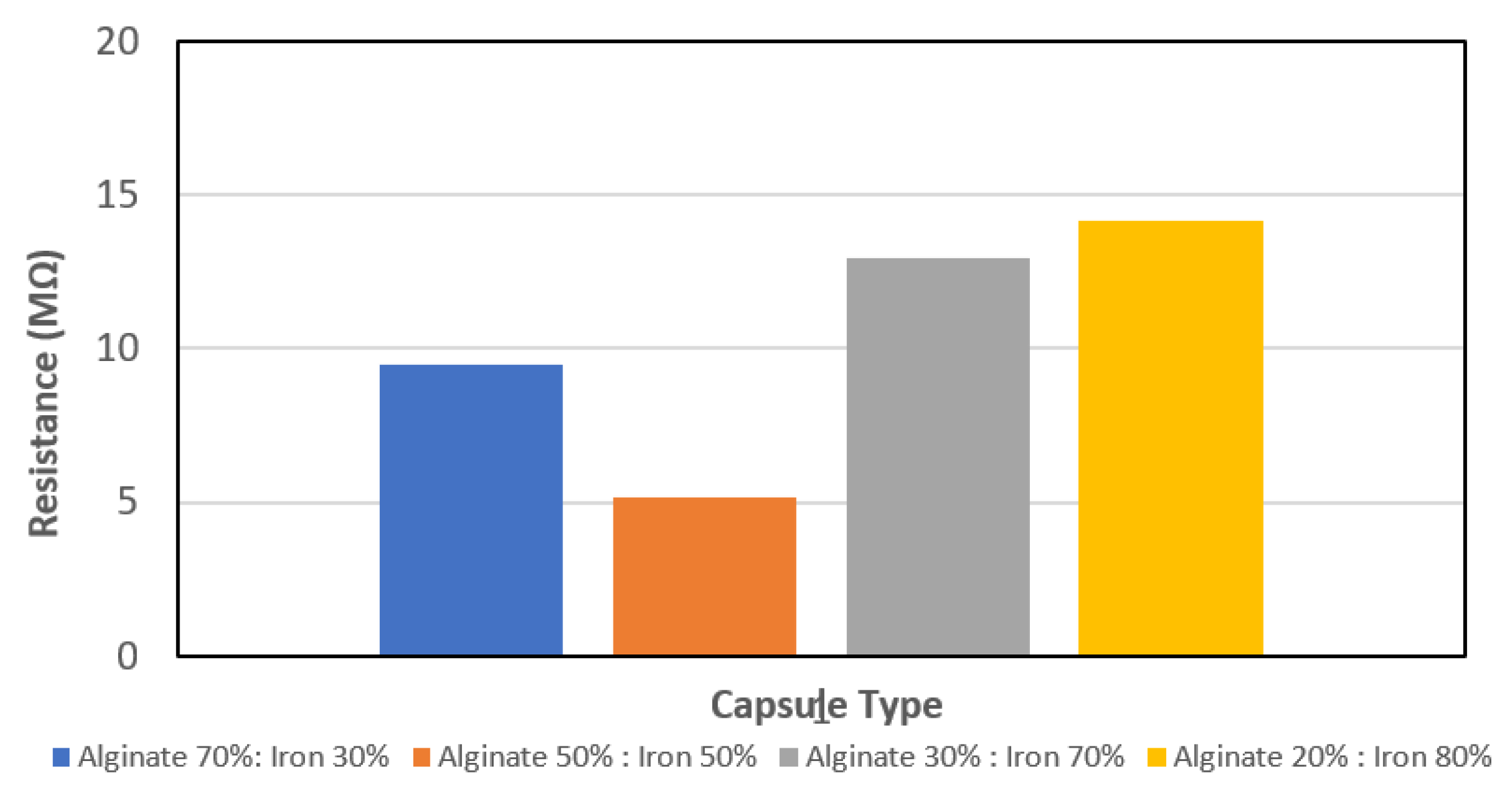
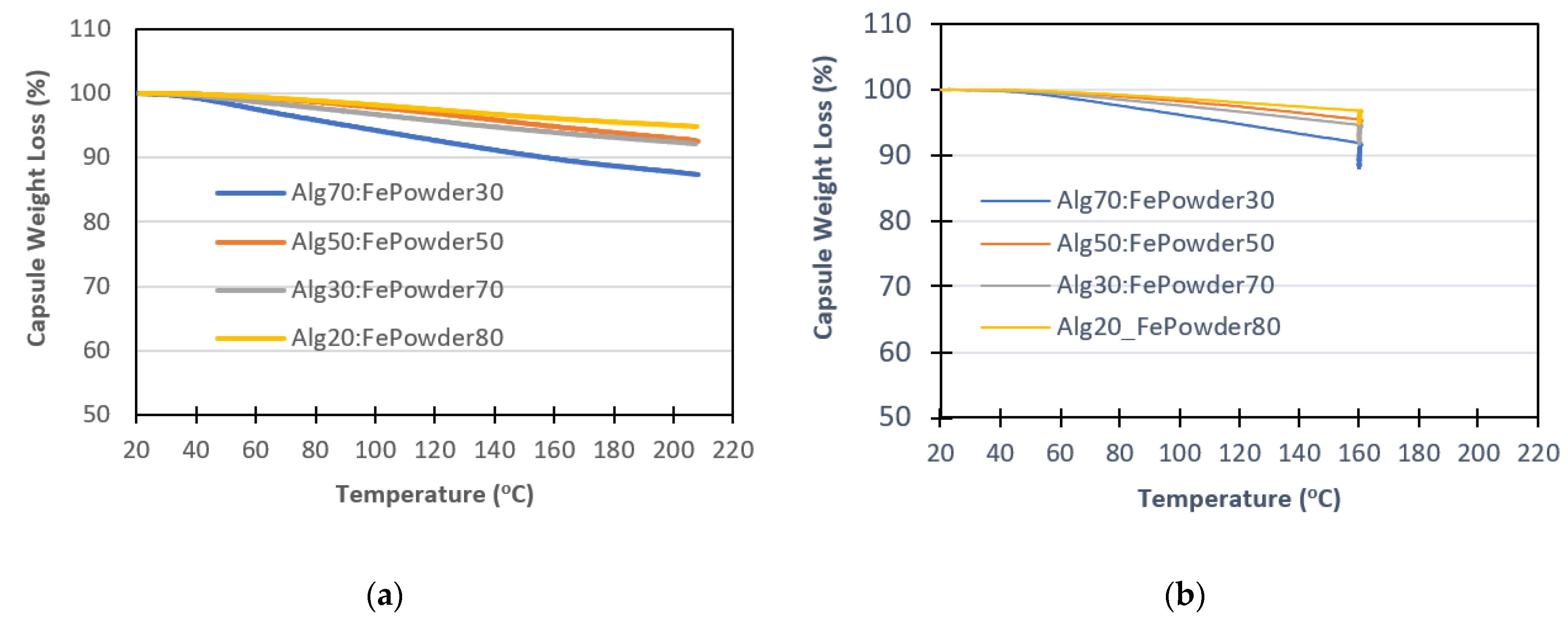
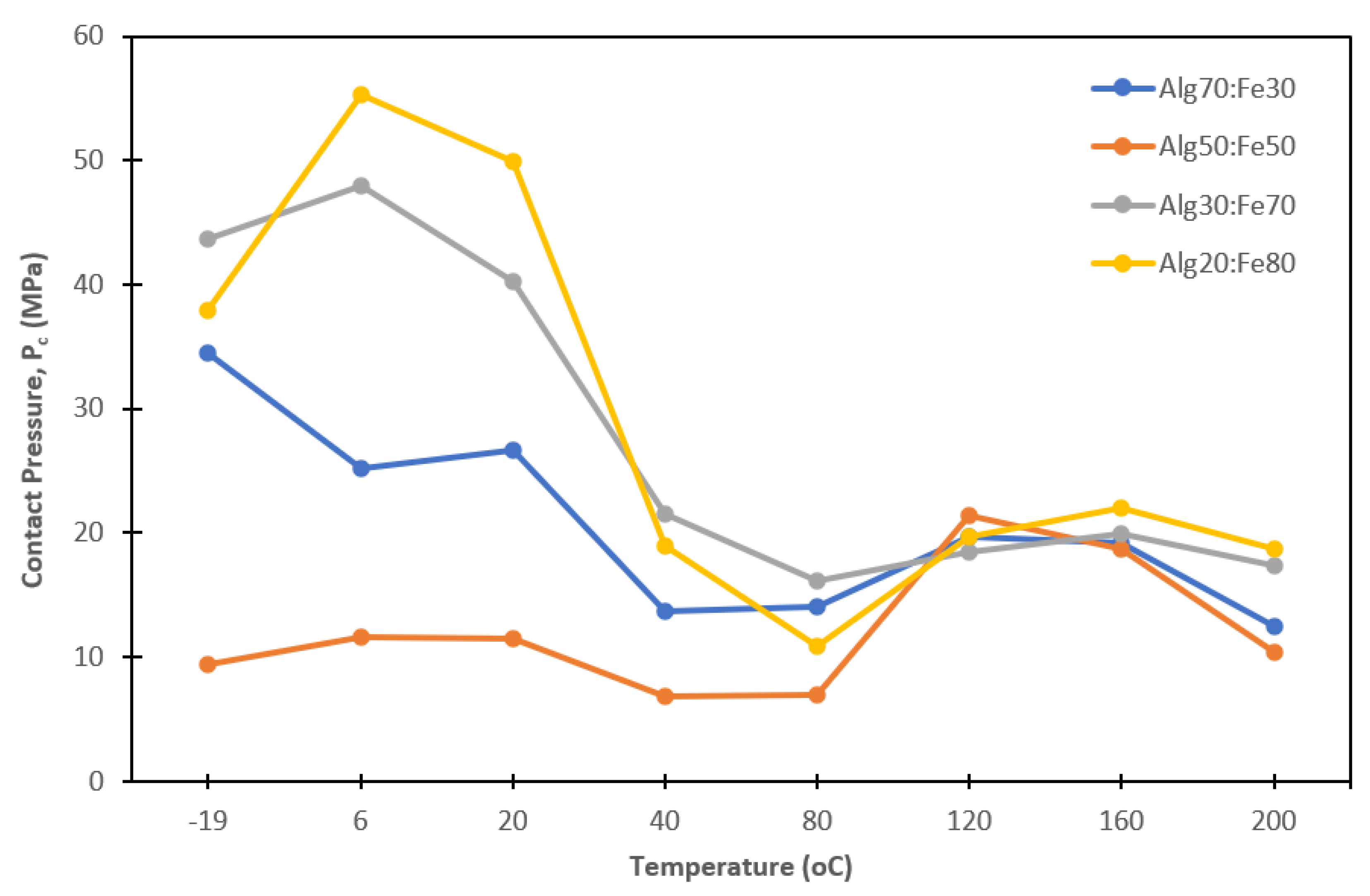
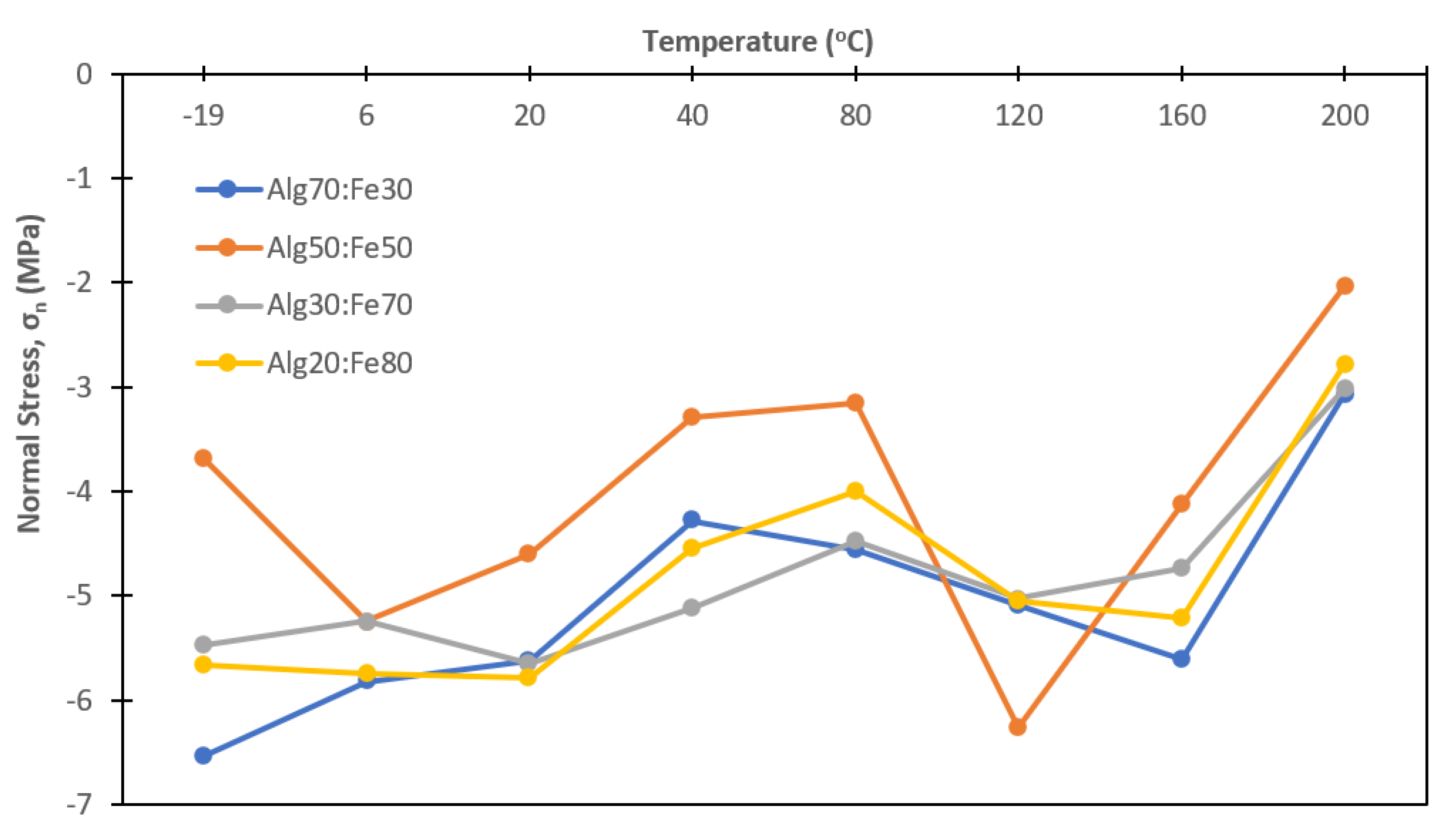
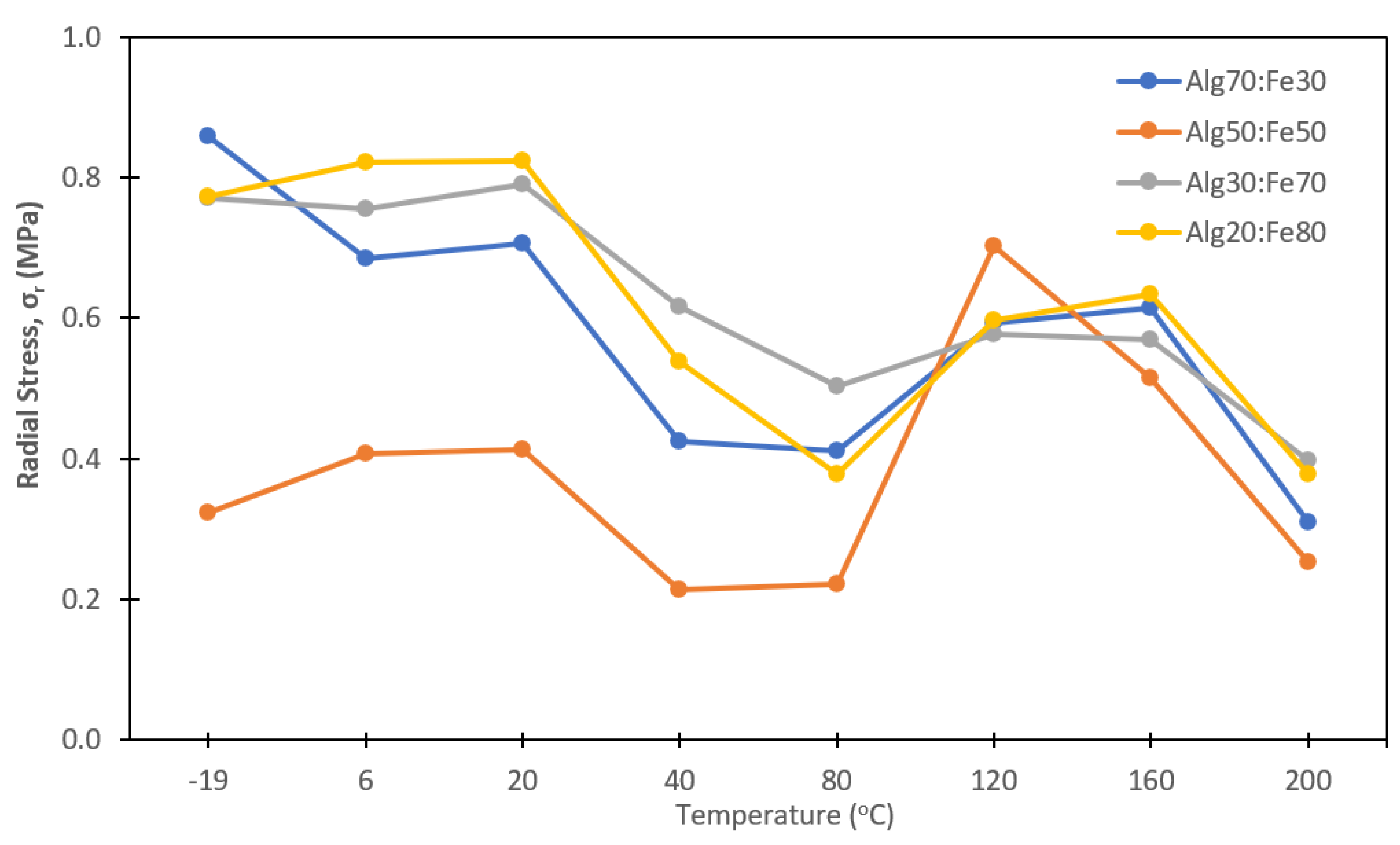
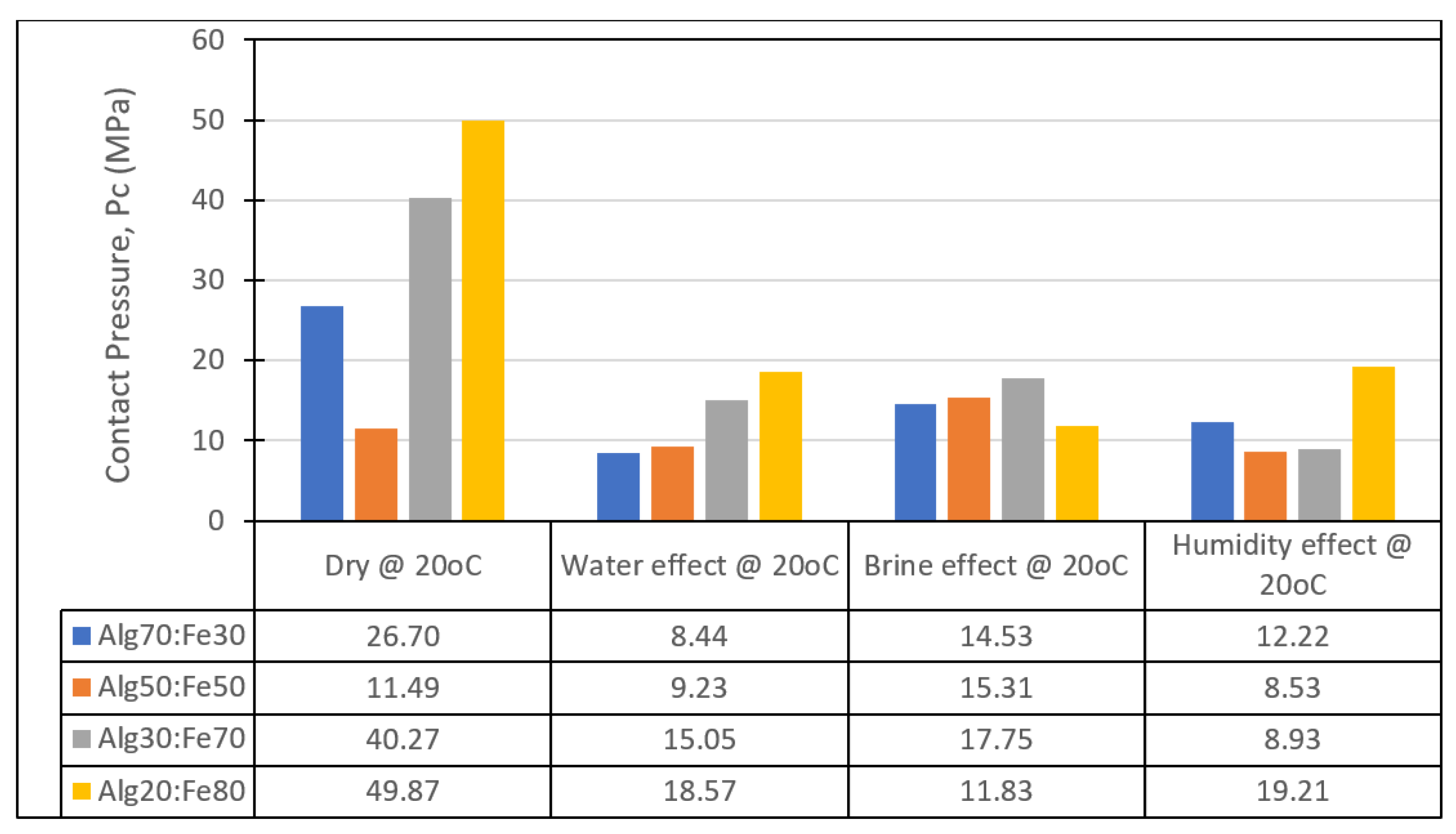
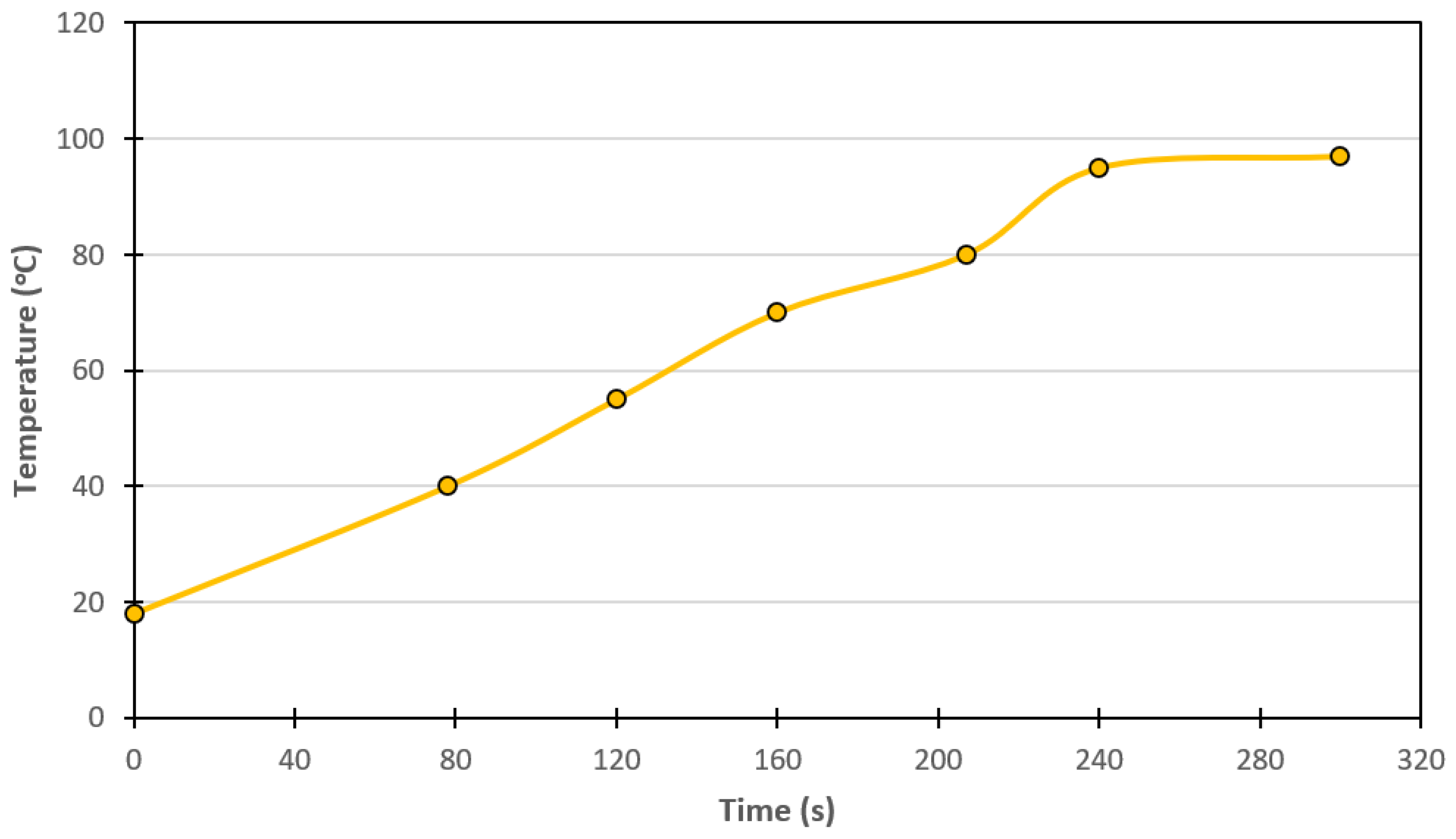


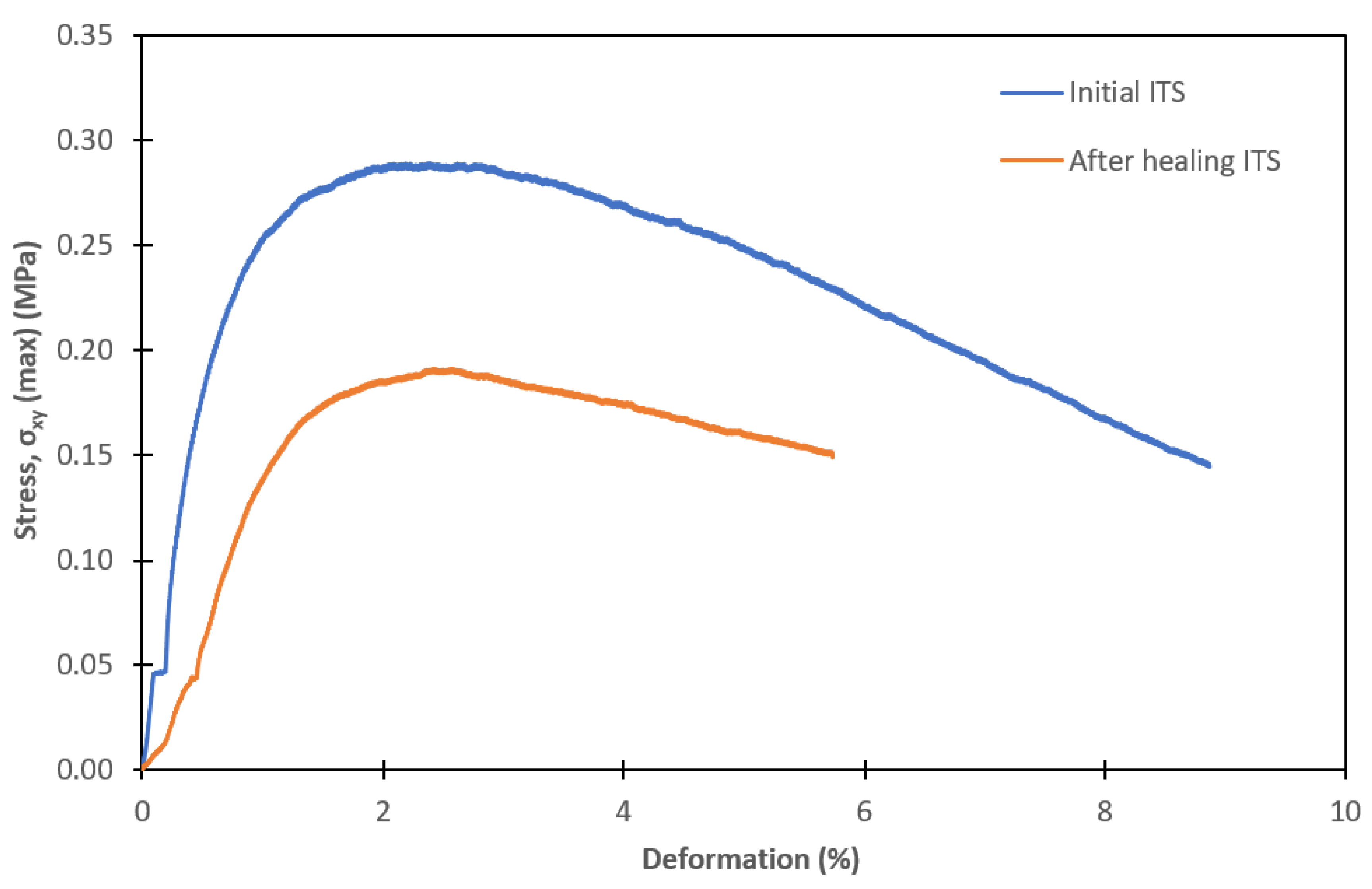
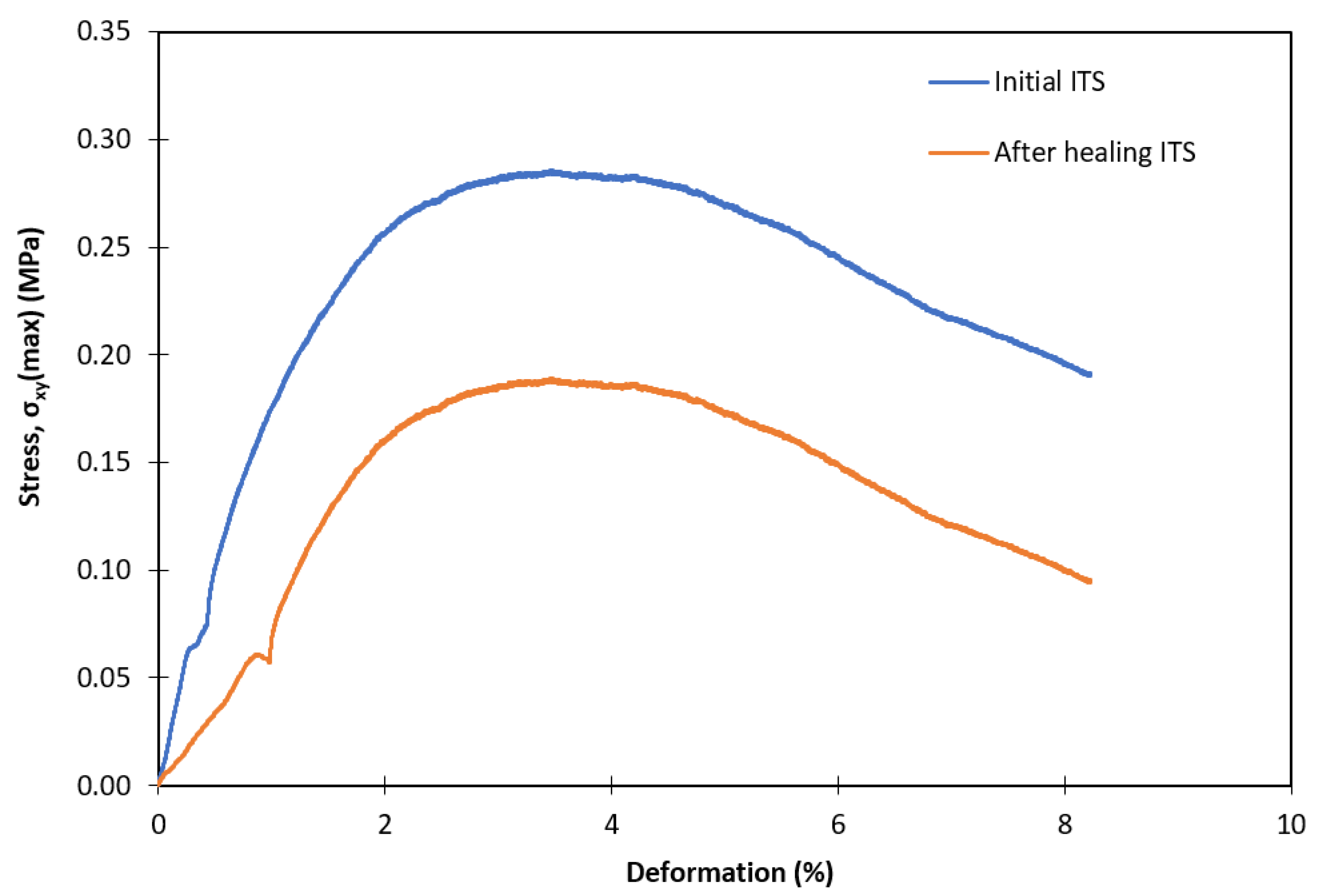
| Capsule Content in a Bitumen Mix | Capsule Content in a Mortar Mix | |||||
|---|---|---|---|---|---|---|
| Mix Constituent | 5% | 7% | 10% | 20% | 5% | 10% |
| Sand (g) | - | - | - | - | 15 | 13 |
| Bitumen (g) | 9.5 | 9.3 | 9.0 | 8.0 | 6 | 6 |
| Capsule (g) | 0.5 | 0.7 | 1.0 | 2.0 | 1.0 | 2.7 |
| Capsule Mix | Capsule Mix Relative Density (g/cm3) |
|---|---|
| Alg 70:Fe 30 | 0.616 |
| Alg 50:Fe 50 | 0.684 |
| Alg 30:Fe 70 | 0.853 |
| Alg 20:Fe 80 | 1.098 |
| Capsule Mix | Water Conditioning | Brine Conditioning (3.5% Salt Solution) | Humidity Conditioning (49%) | |||
|---|---|---|---|---|---|---|
| Initial Weight (g) | Weight after Conditioning (g) | Initial Weight (g) | Weight after Conditioning (g) | Initial Weight (g) | Weight after Conditioning (g) | |
| Alg 70:Fe 30 | 0.45 | 0.55 | 0.55 | 0.79 | 0.52 | 0.59 |
| Alg 50:Fe 50 | 0.40 | 0.51 | 0.52 | 0.69 | 0.50 | 0.60 |
| Alg 30:Fe 70 | 0.45 | 0.53 | 0.53 | 0.64 | 0.45 | 0.51 |
| Alg 20:Fe 80 | 0.48 | 0.54 | 0.59 | 0.75 | 0.43 | 0.48 |
| Capsule Type | Test Sample Weight (g) | Temp. at Start of Test, Ts (°C) | Temp. at the End of the Test, Tmax (°C) |
|---|---|---|---|
| Alg 20:Fe 80 | 6.89 | 18.0 | 97 |
| Alg 30:Fe 70 | 5.22 | 17.5 | 54 |
| Alg 50:Fe 50 | 4.80 | 19.0 | 29 |
| Alg 70:Fe 30 | 4.11 | 18.7 | 25 |
Publisher’s Note: MDPI stays neutral with regard to jurisdictional claims in published maps and institutional affiliations. |
© 2021 by the authors. Licensee MDPI, Basel, Switzerland. This article is an open access article distributed under the terms and conditions of the Creative Commons Attribution (CC BY) license (https://creativecommons.org/licenses/by/4.0/).
Share and Cite
Tabaković, A.; Mohan, J.; Karač, A. Conductive Compartmented Capsules Encapsulating a Bitumen Rejuvenator. Processes 2021, 9, 1361. https://doi.org/10.3390/pr9081361
Tabaković A, Mohan J, Karač A. Conductive Compartmented Capsules Encapsulating a Bitumen Rejuvenator. Processes. 2021; 9(8):1361. https://doi.org/10.3390/pr9081361
Chicago/Turabian StyleTabaković, Amir, Joseph Mohan, and Aleksandar Karač. 2021. "Conductive Compartmented Capsules Encapsulating a Bitumen Rejuvenator" Processes 9, no. 8: 1361. https://doi.org/10.3390/pr9081361
APA StyleTabaković, A., Mohan, J., & Karač, A. (2021). Conductive Compartmented Capsules Encapsulating a Bitumen Rejuvenator. Processes, 9(8), 1361. https://doi.org/10.3390/pr9081361







